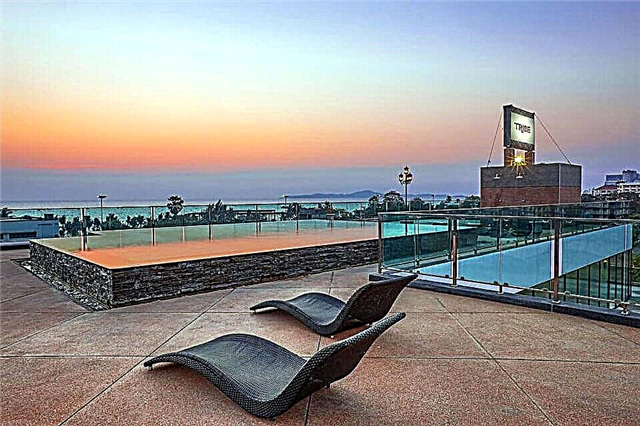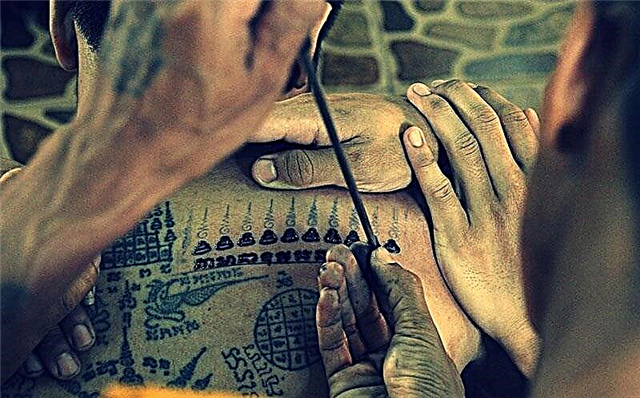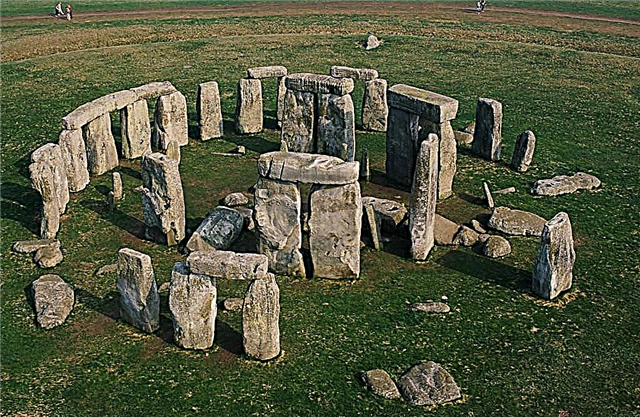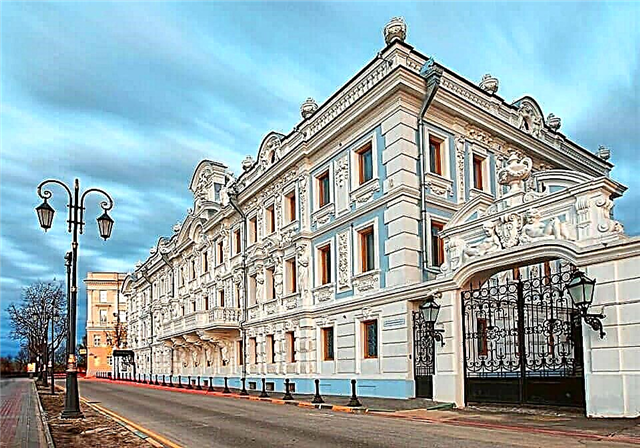Nizhny Novgorod is a city with a rich history. Today it is a province, but at the beginning of the 20th century a fair was held here, which was attended by Russian and foreign industrialists. Many bought houses and started businesses. And the cultural life of the city was full of interesting events. The center of modern Nizhny Novgorod has retained its pre-revolutionary appearance. A walk through the historical part will leave an unforgettable experience. And the museums of Nizhny Novgorod will help you to learn more about how the business circles of Russia lived at the end of the 19th and the beginning of the 20th centuries, what the townspeople were interested in.
Nizhny Novgorod Kremlin
The first fortress on the site of the modern Kremlin was built in the 13th century. Prince Yuri Vsevolodovich chose a successful relief:
- the fortress is protected by the high bank of the Volga
- as a natural water barrier, the building is protected by the waters of the confluence of two rivers: the Volga and the Oka
- on the back side of the wall is protected by a deep Pochainsky ravine with steep slopes
The enemies could not overcome even the adobe walls on the move. A small garrison could defend the fortress. But after a century, the earthen structure was replaced. The Kremlin has turned into a white stone, and the new territory has become larger. The building was of great military importance until the end of the 16th century. And after the annexation of the lands of the defeated Kazan Khanate, the Kremlin ceased to be a strategic object of the border area.
At first, the towers housed warehouses and the city archive. Later, an artistic and historical exposition was organized here. Over the entire history of its existence, the Kremlin has been restored several times. The work was not always successful: in some places the walls were washed away by groundwater. But at the end of the twentieth century, reconstruction restored the appearance of the fortress at the end of the 16th century. At all times, the Kremlin was not only a place where the townspeople were hiding from enemies.
An army was formed here for Ivan 4's campaigns against Kazan. At the walls of the fortress, the militia of Kuzma Minin collected funds. And during the Great Patriotic War, the Kremlin towers were equipped with anti-aircraft guns. Today the Kremlin is the official residence of the governor and mayor of the city, so not everywhere you can go freely. But every tourist can inspect the wonderful architectural ensemble, see the Volga and the old part of Nizhny Novgorod from the observation deck of the Chkalovskaya Stairs.
The Rukavishnikovs' estate

The Rukavishnikovs are a well-known family that made their fortune in trade in the 19th century. Nizhny Novgorod has several buildings built with the money of a glorious family. And the merchants considered the family estate to be a wooden estate in the Dyatlovy Hills. In the late 70s of the 19th century, Sergei Rukavishnikov decided to rebuild the family house. They did not spare money for this: the estimate was about 1,000,000 rubles. For comparison, about 300,000 rubles were allocated from the treasury for the construction of the City Council at the same time.
True, there was an obstacle: Rukavishnikov's old aunt refused to move to another place, even during the work. They did not bother her: the wooden house was organically incorporated into the new ensemble. The old woman had to endure the hustle and bustle around her old nest. The project of the new ensemble was entrusted to Pyotr Boytsov. He combined several architectural styles.
The structure turned out to be rather pretentious, with an unexpected combination of details, but the customer was satisfied. The fate of the estate was successful: after the October Revolution, it was immediately nationalized. The proper condition of the house was always carefully monitored. Later, it housed the department of the museum-reserve.
Art Museum
This is the oldest provincial exposition in Russia. The opening took place almost simultaneously with the beginning of the work of the Nizhny Novgorod art and industrial exhibition in 1896. The first visitors to the fair and the townspeople were able to appreciate the collection of artifacts. The initiators of the creation of the center were the citizens of Nizhny Novgorod Koshelev and Karelin. They believed that a well-organized permanent exhibition would serve the development of tourism. The city government allocated a place: the Dmitrievskaya tower of the Kremlin.
The first funds consisted of:
- collections of paintings, sketches and sketches by the artist Koshelev (including the work The Burial of Christ)
- gifts of townspeople
- paintings by Makovsky, Repin, Ryabushkin, donated to the center by the authors
- gifts of the Academy of Arts of St. Petersburg
- paintings by Kustodiev, Nesterov, Roerich, acquired by the center thanks to Maxim Gorky
After the October Revolution, the funds expanded by transferring nationalized paintings to the center. Today the complex consists of 2 parts and occupies 2 buildings: the house of the military governor in the Kremlin and the house of Sirotkin (Verkhnevolzhskaya embankment). There is a permanent exhibition, thematic ones are organized. An extensive program of lectures is offered to adults. Quests are held for children. Local artists give master classes at the center's art studio.
Technical museum
It arose from the private collection of the Nizhny Novgorod resident Khurtin in 2014 and quickly became popular. Therefore, already in 2016, the exhibition became a state exhibition. Today it is visited by almost all tourists. And the townspeople love to spend their leisure time here.
It is conditionally divided into several parts:
- Transport of the late 1XX-early XX century. Visitors will see a unique wooden bicycle made by city craftsmen at a time when it was impossible to buy such a curiosity.
- Firefighting and medical equipment. Particularly attractive are the 19th century tower clocks, which still show the time correctly.
- Ship instruments and mechanisms. Here are the devices that were used to equip the vessels of the past and the century before last.
- Factory and handicraft tools: forges, hammer, anvil, the first machine tools of manufactories.
- Musical novelties: organ, boxes, phonograph, gramophone, gramophone. You can also see Soviet tube receivers, filmoscopes, projectors. The pride of this showcase is the working KVN-49 TV set.
- Soviet communication devices: telegraph, telephone.
There is a modern cinema hall. It demonstrates for visitors 3D films on the history of technology of the 1st-20th-20th centuries. Plots from the life of the city are also presented.
A.S. Pushkin Museum
Recently opened: in 2009. It is part of the Boldino nature reserve. The exhibition is housed in a hotel owned by Deulin, a Nizhny Novgorod merchant. The house has been reconstructed, but the historical appearance has been preserved. It was in Deulin's rooms that Alexander Sergeevich stayed when he went to Orenburg to collect materials on the Pugachev revolt.
The poet visited the governor, told him where and why he was going. But the official turned out to be too suspicious: he sent a letter to his Siberian colleague about the visit of an incognito inspector, and forced Pushkin to stay in the city so that the authorities of the Orenburg province had time to prepare. It was this plot that Alexander Sergeevich subsequently presented to Gogol. Today, all readers are familiar with the literary presentation of the events that took place from the play The Inspector General.
The collection is small, it occupies only 2 rooms:
- One contains letters, documents, photographs of people with whom the poet met. He's called that: a poet in Nizhny Novgorod.
- The second hall is dedicated to how Pushkin is seen today. Here you can see clothes from Pushkin's times and drawings by children of the local art studio dedicated to Alexander Sergeevich.
The administration of the center regularly conducts thematic exhibitions and excursions.
Museum-apartment of A.M. Gorky
The decision to create a permanent exhibition dedicated to the proletarian writer was made in 1930. But the project was implemented only in the 70s of the twentieth century. At the beginning of the twentieth century, the Kirshbaum house had exceptionally expensive rooms: rare citizens could afford high-quality repairs and a telephone.But by 1902, the wanderer with the knapsack had already become a famous and published writer, receiving huge royalties. He rented an apartment of 11 rooms from Kirshbaum.
From 1902 to 1904, Gorky lived here with his wife and 2 children. His rooms immediately turned into a trendy literary and art salon. Stanislavsky, Chaliapin, Chekhov, Tolstoy, Bunin, Repin have been here. It was in the house of Nikolai Kirshbaum that the writer began the novel Mother and completed the play At the Bottom. In 1904, the writer moved to Andreeva, his new lover. And Ekaterina Peshkova lived with her children in an apartment until 1906.
In Soviet times, the hotel was nationalized and a dormitory was placed there. The original interiors were lost, they had to be restored from the memoirs of contemporaries and photographs. Irina Chaliapina and Gorky's widow helped. Today, even the wallpaper on the walls and the electrical wiring is the same as when the petrel of the revolution lived in the house.
Museum of the History of Arts and Crafts

It invites guests to get acquainted with all types of folk crafts that have existed on the territory of the province from the 17th century to the present.
You can visit:
- peasant hut with carved platbands and unique dishes
- a merchant's house with rich interior details made by local craftsmen
- a temple where the Royal Doors carved from wood are amazing
The exhibition consists of over 4,000 items. Here are:
- carved woodwork
- painting on wood (Gorodets, Khokhloma, Polkhov-Maidan)
- church items
- metal products (casting, filigree, boxes, knives, jewelry)
- furniture (carved, wicker)
- ceramics
- weaving (embroidery, sewing, lace, printed)
- bone products
- stone products
- women costume
- toy (wood, clay)
And after the inspection, master classes are held on painting wooden nesting dolls, wood carving. Special excursions are organized for children, during which experienced teachers do not let the children get bored. And in order for the thematic exhibitions held by the administration to be remembered for a long time, local ensembles and students of the Nizhny Novgorod Conservatory are invited.
Russian Museum of Photography
The center occupies a 19th century building. It was specially rebuilt in order to make it convenient to do photography. Nizhny Novgorod residents Karelin, who developed the principles of artistic photography, and Dmitriev, the founder of newspaper (publicistic) photography, worked here. The first floor of the house was occupied by a processing room (phototype). The photo pavilion occupied the entire second floor. For the convenience of Karelin and Dmitriev's work, one wall was completely replaced with a glass one.
The third floor was occupied by the Dmitriev family. And the pride of the house was a glass showcase, in which photos of the city, famous people visiting Nizhny Novgorod were exhibited. Here were exhibited photographs of Gorky, Melnikov-Pechersky, Chaliapin, Korolenko. There were always onlookers in front of the stand. The center was founded in 1992, but its funds are impressive: more than 175,000 photographs, negatives, daguerreotypes, cameras and enlargers, letters and personal belongings of famous city photographers.
Today the collection occupies 2 floors:
- the first exhibits photos of Nizhny Novgorod, famous people, unique equipment, photographic plates
- the second one organizes thematic exhibitions of Russian and foreign photographers
The pride of the center is a dark room, where an image gradually emerges in the light of red lamps on white paper.
Museum of entertaining sciences "Kvarki"
In this wonderful center, adults and children will become familiar with the operation of the laws of the natural sciences. Here are the devices invented by man over the centuries. Boring physics and chemistry lessons are complemented by amazing hands-on work. The exhibits in the center are grouped over an area of over 1,000 square meters. Some take up an entire room, others are compact.
It is conventionally divided into several zones:
- The blue showcases instruments invented from antiquity to the Renaissance.
- In red, you can see things that people used at a later time. Guests are taking pictures of the printing press, telegraph, railway models.
- In the green zone, modern achievements are presented.
All exhibits are interactive: you can touch them, and, if necessary, conduct an experiment on your own. Exciting master classes in physics and chemistry are held for children. Such classes will complement the knowledge gained at school. Guided tours are provided for guests. Service (subject to ticket availability) is free if the group is 20 people. It is recommended to make an appointment in advance. Individual service is paid additionally.
House of Kashirin

It has been receiving tourists without interruption since 1933. He even worked during the Great Patriotic War. In the house where Alyosha Peshkov's grandfather Vasily Kashirin once lived, the atmosphere of the boy's early childhood has been restored. The house consists of 5 rooms, where Kashirin himself, Akulina's grandmother and their sons, Mikhail and Yakov lived. The original items and furniture that were used by family members at the end of the 19th century have survived.
The structure itself is one-story, chopped, typical for Nizhny Novgorod at the end of the 18th century. Poor bourgeois or wealthy artisans settled in such houses. An interesting part of the collection is presented in the kitchen. This is the main room in the house, here all the household gathered for a meal, festive feasts and even Saturday punishments. A workshop in which fabrics were dyed and a carriage shed were reconstructed in the courtyard. A grave cross is leaning against the fence. This is reminiscent of the scene described by Gorky in Childhood: the tragic death of the worker Gypsy.
Shchelokovsky farm
Since 1870, the land was owned by the merchant Shchelokov, who traded in tea. His name gave the name to the farm. And the idea to create an open-air exposition arose in the Council of Ministers of the USSR in the 50s of the twentieth century. The project (with reference to the area) was developed by local scientists: Agafonov and Zvantsev. Unfortunately, the work of the architects did not suit the authorities: after 10 years, Samoilov made all the events anew. It was his project that was implemented in the early 70s of the twentieth century. The exhibition received its first visitors in June 1973.
Shchelokovsky farm is a village consisting of houses of the 16-19 centuries, built in the Nizhny Novgorod province. The buildings were found in the Kstovsky, Gorodetsky, Semenovsky and Koverninsky districts. Then they were disassembled, transported to a new location and reassembled. They placed huts along a wide road to create the appearance of a new village.
There are also several churches, a mill, outbuildings on the farm. The windmill is remarkable: it revolves around a fixed post. The exposition covers 36 hectares. People come here to immerse themselves in the atmosphere of a Russian village of the 16-19 centuries. Employees of the Shchelokovsky farm conduct exciting excursions, master classes in needlework and crafts.
Museum of the history of OJSC GAZ

The first guests visited this place in October 1965. Today it is a unique center, the collection of which is readily viewed by foreign and Russian tourists. It is not surprising: after all, it consists of more than 40,000 storage units. Part of the exhibition GAZ Historical Heritage is especially interesting for guests. All brands of cars produced by the plant are presented here. Cars were bought from owners, found at metal collection points and completely restored.
Missing parts were replaced with original ones whenever possible. Any car can be started: it will certainly work. Documents, photographs, letters related to the life of the company's employees have been preserved. Visitors get acquainted with the traditions of GAZ, which have been formed over several decades of work. Information about OJSC GAZ can be found in the European catalog of car museums.
Nizhny Novgorod radio laboratory

It is located in the house where the Theological Seminary was located until 1918.The radio laboratory worked in the city for 10 years, and during this time scientists and engineers carried out a series of studies that brought the USSR to the forefront.
Today the exhibition presents:
- radios of different years of creation
- unique radio tubes
- receivers and transmitters
- work documents
- unique photos
Occupies 2 halls:
- In the 1st hall, all the equipment that was produced in the USSR from the 30s to the 80s is exhibited. Here, visitors will see exhibits from the first vacuum tube radios to the first electronic video recorder.
- Hall 2 - a modern physics laboratory. It is popular with schoolchildren. Here you can not only see the achievements of mankind, but also conduct independent experiments.
The laboratory is interesting for guests of all ages. The guys stay for a long time in hall 1. Adult visitors will be happy to appreciate the work of the first science-intensive enterprise in the USSR.
Art gallery "Kladovka"
The gallery is a place that will appeal to those who recall the country's Soviet past with nostalgia. The storeroom was founded by Pavel Plokhov, a graduate of the Nizhny Novgorod Theater School. The purpose of the complex is to create a retro exposition and a place where creative people can have a good time. The gallery consists of 3 rooms:
- musical with records and music players of the 70s of the twentieth century
- handcrafted room
- literary with magazines and newspapers of the Soviet period
The storeroom is often visited by collectors: the exhibits you like can be purchased. A small stage is built in the back of the gallery. Literary readings are held here, plays are staged. In this case, the literary hall turns into a chamber salon.
Museum of illusions

This is a great place to have fun and take plenty of pictures. The action is based on the fact that in certain places a flat picture becomes three-dimensional. By stopping in the right places, guests move into virtual reality. Coming out of there - they return back to our world.
The plots offered are varied:
- undersea world
- Wild West
- jungle
- prehistoric world with dinosaurs
- unusual situations (a cat having dinner with guests lying on a plate)
Plunging sequentially into one illusion after another, you can spend several hours in the center. And neither children nor adults will be bored. It is important to consider: in order to get quality pictures, it is recommended to have excellent equipment or seek the help of a local photographer. The disadvantage is the tightness. With an influx of visitors, you have to wait until the zone of interest is free.
Living Paper Museum
The paper exhibition is unique. And the papier-mache craftswomen Elena and Natalia came up with it. All storage units are made by them. It only seems that objects made using the papier-mâché technique should be small and fragile. Everything designed by Natalia and Elena is durable, easy to disassemble and move. This is the know-how of the creators. Guests are greeted by friendly guides. They will tell you about each artifact, introduce you to the legends and legends that were born around the ancient craft.
And for those who want to immediately do something with their own hands, master classes are held. In such lessons, children and adults try their hand at a special art. For those who are seriously interested in technology, there is a school. The townspeople fell in love with her and willingly attend classes. But the gallery is interesting not only for the exhibition and the school: sometimes it turns into a thematic living room, which everyone can visit.
Memorial Apartment of Andrei Sakharov
Created at the request of the townspeople. After the death of the once exiled Sakharov, in the entrance, where he lived with his family for 7 years, admirers came and lit candles. Soon the city authorities decided to organize a center in Andrei Dmitrievich's apartment. And the exhibition itself received its first visitors in just 1 year. Furniture and objects in the room create the ambiance of the 80s of the twentieth century. Everything is arranged in the same order as it was under Sakharov. No luxury: even the comfort is rather conventional.
The exhibition consists of 2 parts:
- Tells about the life of a scientist and his discoveries in science. Here you can see unique photographs, documents, letters.
- Shows the life that surrounded Sakharov for 7 difficult years. State-owned furniture, modest dishes, cheap repairs are presented. It was in such conditions that Soviet people lived at the end of the twentieth century.
But the permanent exhibition is not the only thing that attracts guests. Literary readings are organized here, musical evenings are held. Caring creative people still come to Sakharov's apartment.
River Fleet Museum
He began working in Gorky in 1935, and the first exhibits were exhibited in 1921 in Saratov. Today the center is a place where time flies by instantly. Here guests freeze for a long time in front of ship models or stands with priceless documents.
The exhibition occupies several halls:
- A room where visitors learn about the history of the river fleet. After inspection, it is already easy to distinguish a plow from a boat, a shitik from a galley, and an embroidery from a boat. Some ships are presented as models.
- A hall where models from the first steamships to modern river vessels are exhibited. Guests are interested in inspecting tugboats, passenger ships and dry cargo ships.
- A room where machines and mechanisms are presented, which are necessary for organizing waterways of communication: dredges, dredges, dredgers, deepening the bottom of the machine.
- The hall where the achievements of the modern river fleet are presented.
Guests will see unique filing of newspapers and magazines. The collection of photographs will not leave anyone indifferent. A separate stand will tell you about the work of barge haulers on the Volga.
Gallery of Dolls "Fragile Dreams"
Olga Lobacheva, a resident of Nizhny Novgorod, has been fond of handmade dolls since childhood. Growing up, she began collecting them. In 2015, the lady organized a thematic exhibition at the Rukavishnikov estate. The event was so successful that Lobacheva thought about creating a permanent exhibition. By this time, Olga had established contacts with Hildegard Günsel, a doll manufacturer in Germany. Gunzel owns a small workshop, Hildegard's works are unique.
Lobacheva managed to collect the largest author's collection. Today, Fragile Dreams is a center where you can admire Stein dolls and cubs. Exhibited canvases by artists living in the Nizhny Novgorod land. Guests are invited to attend master classes and buy souvenirs in a small shop. For those who wish, excursions are held in the form of a performance.
N. A. Dobrolyubov Museum
The architectural ensemble of the center itself is quite interesting: this is the estate of a priest, whose family occupied a modest wing, and existed on the income received from renting out a large house. The city estate was built at the end of the 19th century. The exposition contains some authentic things of the Russian writer-philosopher. In addition, it is the only center that gives a complete picture of the meek life of a talented young man.
Priest Alexander Dobrolyubov had a large family: 10 children. And they were all housed in 6 rooms of the wing. Nikolay (by seniority) occupied a separate room. Here he studied, preparing to enter a theological school and continue the dynasty. The furnishings completely repeat the original. And the sofa and glasses are genuine: they were kept by relatives. The house displays letters, photographs, early works and poems by Nikolai, his collection of butterflies.
The female part of the family was engaged (except for studies) in needlework and music. Parents collected a large library and introduced children to reading early. This is precisely what served to form the future writer 's anti - monarchist and anti - serfdom views. The apartment building provides an opportunity to get acquainted with the life of the poor bourgeoisie at the end of the 19th and the beginning of the 20th century. it also hosts thematic exhibitions, literary and musical lounges.
Museum and Exhibition Center "Mikula"
This is a new complex based on the Museum of Military and Labor Glory. In the 90s of the twentieth century, the center received its modern name. Permanent exhibitions dedicated to the people of the Moscow district of the city, their lives and exploits during peace and tragic events, are supplemented by modern master classes, works by contemporary artists, and objects of decorative and applied art. Mikula is a place where the cultural life of not only the region but also the city is in full swing.
Literary readings, creative meetings with artists and poets, festivals of crafts of the Nizhny Novgorod land are held here. Mikula's administration also remembers people with disabilities. Invitations are sent to them in advance, thematic events are held. And if you have to be in the center during Shrovetide or Christmas, you will have enough impressions for a whole year. Mikula knows a lot about organizing holidays.
Museum of the History and Development of the Gorky Railway

The first guests visited the center in 2014. And the exhibits were provided by 2 organizations: the Museum of the Gorky Railway Junction and the Central House of Culture of Railway Workers. The purpose of the exhibition: to show the history of the road from the moment of its foundation (from 1858) to the present day. Visiting the exhibits, guests evaluate the impact of the construction of the highway on the growth and development of the regions that it connected. The stands show models of steam locomotives that once pulled trains in England and Russia, unique letters, photographs and personal belongings of road workers.
Devices that were used in trains and at railway stations are also on display: lanterns, cash desks, composters. A separate story is told about the life of the transport hub during the Great Patriotic War. Transport should work without interruption, deliver goods to and from the front line. Women replaced the men who went to the front. Some of the exhibits can be touched: children especially like it. The collection of the center is constantly updated. It reflects the current state of the transport hub.
FUTURO Gallery
The gallery is a place for those who love innovations in art. Guests who prefer traditional destinations are advised to choose something else to visit. FUTURO Gallery is a platform for the creative youth of the city. It hosts unusual thematic exhibitions and performances. The interiors are particularly impressive. High ceilings, lack of fresh plaster, huge doorways and oak doors create a sense of being immersed in the past. And the combination with an unusual modern concept is simply unforgettable.
Museum "Locomotives of Russia"
Be sure to visit after the Museum of the History and Development of the Gorky Railway. Restored steam locomotives and locomotives stand in the open air. You can touch them, even climb inside and take pictures. It will be interesting not only for children, but also for adults. And nearby are old train stations, visiting which you can feel like a passenger of the middle of the 19th century. it is important to remember: the passage to the steam locomotives is free, but the excursion should be booked in advance.
Museum of the Nizhny Novgorod Airport

The center was founded on the basis of the room of labor and military glory of the Strigino airport. Guests are offered permanent exhibitions dedicated to:
- Valery Chkalov
- Peter Nesterov
- Petr Shavurin
- the first airline of the airport and the first pilot carrying passengers
- the work of the airport and its structural divisions
You can see unique aviation instruments, aircraft cockpit, aircraft control systems. The stands display documents and photographs reflecting the history of the airport from 1939 to the present. The entrance to the center is free, but you can visit it only with a guided tour. You need to sign up for it.











